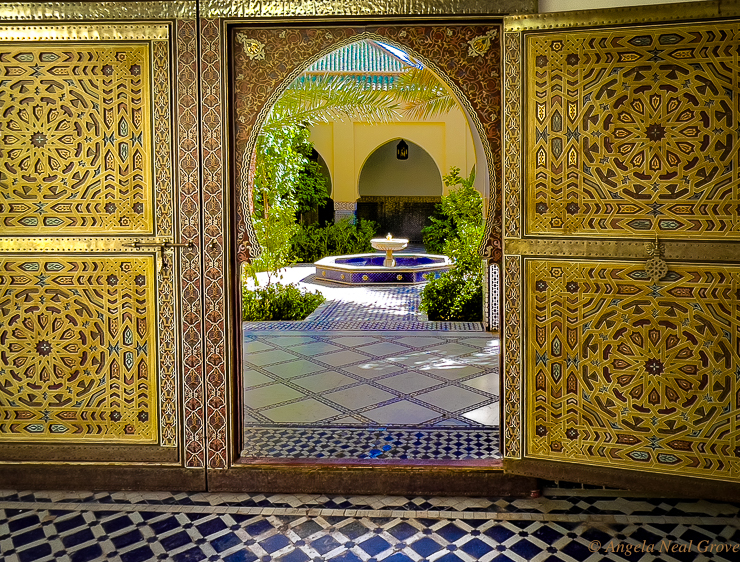
In Morocco, from the High Atlas Mountains to Sahara dunes, I discovered a land of contrasts with a kaleidoscopic history. Walking labyrinthine passages in ancient walled cities it was easy to step back to a time of Sultans and 1001 Arabian Nights. I also saw the modern future of the Kingdom.
I arrived at night when the city of Casablanca was spread out below my plane. The twinkling lights were suspended in the blackness like a gigantic spider’s web clinging to the Atlantic shore. Thanks to the iconic movie, to me the mere mention of Casablanca is synonymous with romance. In the days that followed the real romance of Morocco unfolded like Scheherazade spinning her tales.
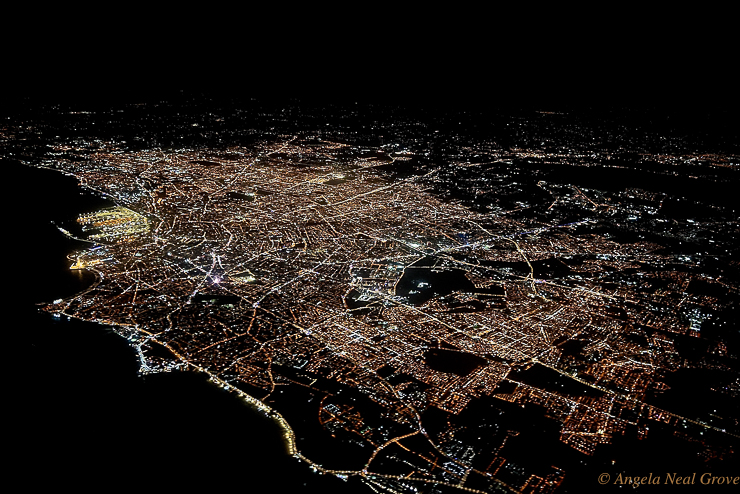
Diplomats and Pirates
About fifty miles north of Casablanca the cities of Rabat and Sale stand on opposite banks of the Bo Regreg River. Two cities with very different histories.
Rabat was settled by sea-going Phoenicians in the 8th century BCE and later by the Romans. In the 12th century Arab Sultans built a fortified monastery and elegant crenellated ramparts encircling the city on its sandstone cliffs.
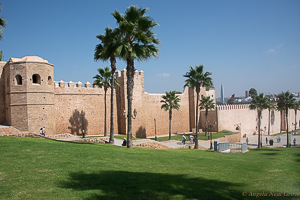
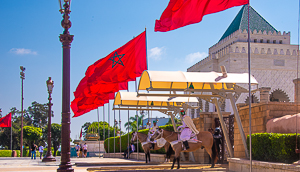
Across the river Sale was notorious for pirates. The most infamous era was the 17th century when it was named the Barbary Coast and home port of the dreaded Sale Rovers. These pirates or corsairs plied the seas and plundered from Iceland to Venice with a fleet of 18 ships. It is said Robinson Crusoe was imprisoned here.
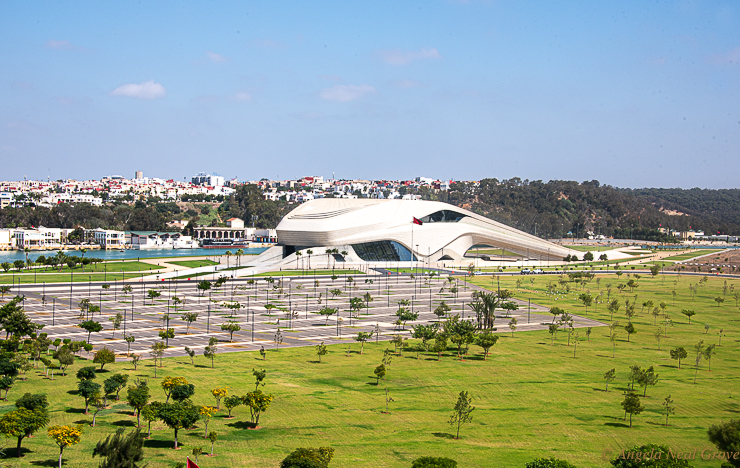
Today Rabat is the capital. King Mohammed VI has a Palace and embassies line quiet tree-lined avenues. However this is a land of contrasts and standing by the old walls of Rabat, looking towards the river, is a symbol of the new Morocco. Shaped like an undulating wave is the Grand Theatre of Rabat which opened in 2023. Designed by Iraqi architect Zaha Hadid it is the largest theatre in the Arab and African world with seating for 7,000.
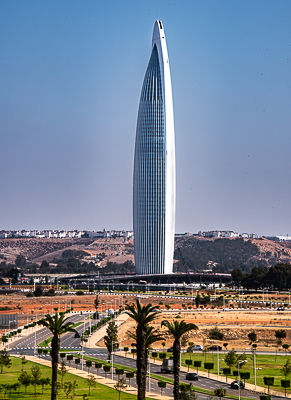
Across the river in Sale, where Phoenicians once had their counting houses is the Mohammed VI tower. Soaring 820 feet into the sky it is Africa’s third tallest building, another new architectural icon.
Many-Walled Fez
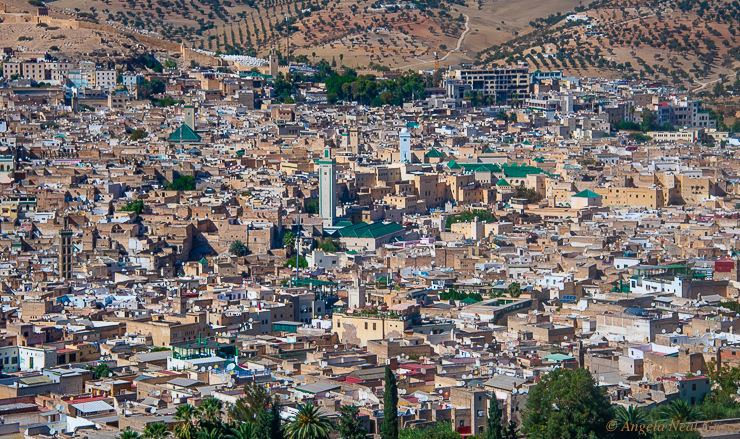
Leaving the Atlantic coast we drove inland to Fez, the capital until 1912. Surrounded by olive orchards and farmland Fez is enclosed by ancient thick walls and ramparts with fortress towers. Traces of the 8th century remain but it was Merinid Princes who built palaces, mosques and medrasas in the 14th century bringing artisans from Damascus and Bagdad to embellish the buildings.
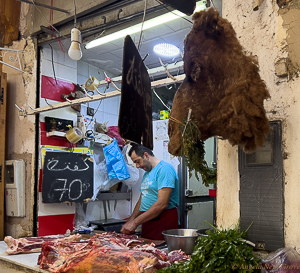
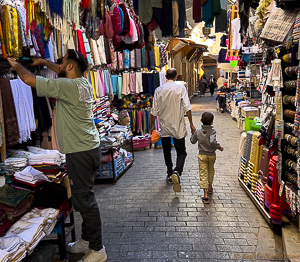
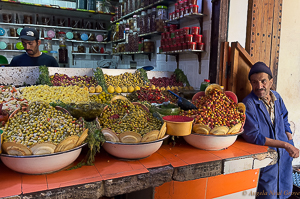
It’s easy to get lost in the winding passages of the Fez medina, some of which are barely wide enough for a single person. Small donkeys with bulging packs still trot, past camel meat butchers, women stretching transparent sheets of filo dough and stalls piled with fresh olives. Embroidered kaftans hang in fluttering rainbows and there are soft bright jewel-encrusted leather slippers and blue ceramics for sale.
The Chouara Tannery was established in the 16th century. Today the rabbit warren of rooms are piled with supple leather jackets and bags. Behind the building huge vats of dye gleam in the sun.
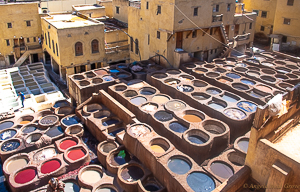
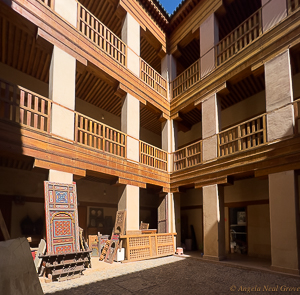
The Fondouq Chemmaine, (a caravanserai in Asia) is being restored so the natural cedar wood gleams once more. This once welcomed camel caravans laden with treasures from across the sahara, Somalia, Bagdad and Timbuktu and it is easy to imagine the inner courtyard bustling with recently arrived animals and packs.
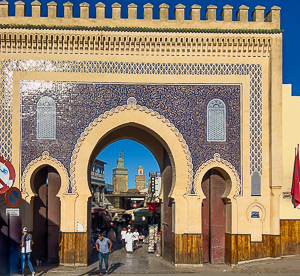
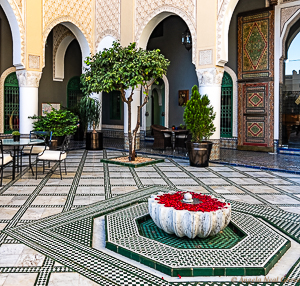
In Fez I stayed in a Riad. A traditional Moroccan home converted to house guests. Here the rooms face inwards towards courtyards filled with flowers, fountains and elaborate fretwork.
Dinnertime on the rooftop was unforgettable. As a harvest moon rose over fields of olive trees the evening call to prayer sounded from first one, then multiple mosque towers across the city. The evening was balmy and my traditional tagine of couscous, lamb and vegetables delicious.
A Roman City
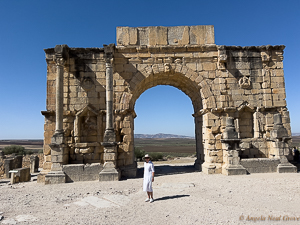
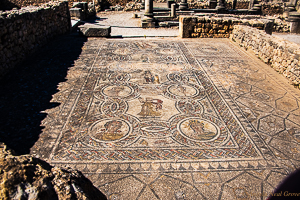
Not far from Fez the Roman city of Volubilis sprawls over a hilltop. Dating back to 3rd century BCE it was built in a fertile olive producing area and the city was clearly prosperous with a basilica, temple, triumphal arch and intricate mosaic floors. Now a Unesco Heritage sight, I wandered the wide avenues, through arches framing views of olive groves. It is easy to imagin Romans living in this outpost far from home.
Desert Nights
Next we headed to the Sahara. Gigantic golden dunes rose like impenetrable sand walls stretching into the horizon. I once spent a night in the desert in a small Bedouin goat hair tent in Oman, on the fringe of the Arabian Empty Quarter. This Moroccan desert experience was very different. Tents were spacious and comfortable. We sipped sundowners as the sun dipped behind the dunes and after dinner were watched traditional Berber entertainment under the stars by a blazing fire.

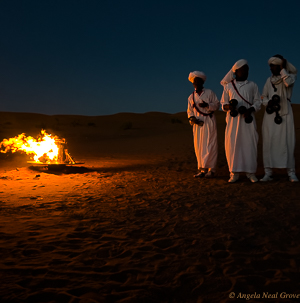
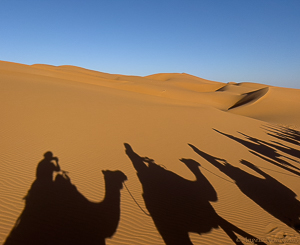
The following morning a single bird hopped onto a chair outside the tent and chirruped at the first grey glimmer of light. I grabbed my camera and set off towards the nearest set of dunes. Undulating curves of sand traced voluptuous curves in the pre-dawn. Slowly first rays of sun appeared as I tried to capture the magic.

The Road to Marrakech
The Atlas Mountains are like a spine separating the Sahara from the coast. They are home to Amazigh people whose civilization reaches back eight thousand years. The drive through the mountains from desert to Marrakech was beautiful as we switchbacked past russet slopes dotted with pine and cedar trees and through remote villages and green valleys with herds of goats.

One of four Imperial cities, Marrakech is not the capital of Morocco but perhaps it is the heart. Founded in the 10th century It has a colorful history of sultans, caliphs, sheikhs and pashas. Named the Rose City because buildings originally constructed from local red sandstone had a rosy hue. The city walls were built in the 12th century and then successive sultans embellished the city with sumptuous palaces. Craftsmen from Cordoba and Seville joined those from the Sahara and West Africa to create a unique Marrakech style.
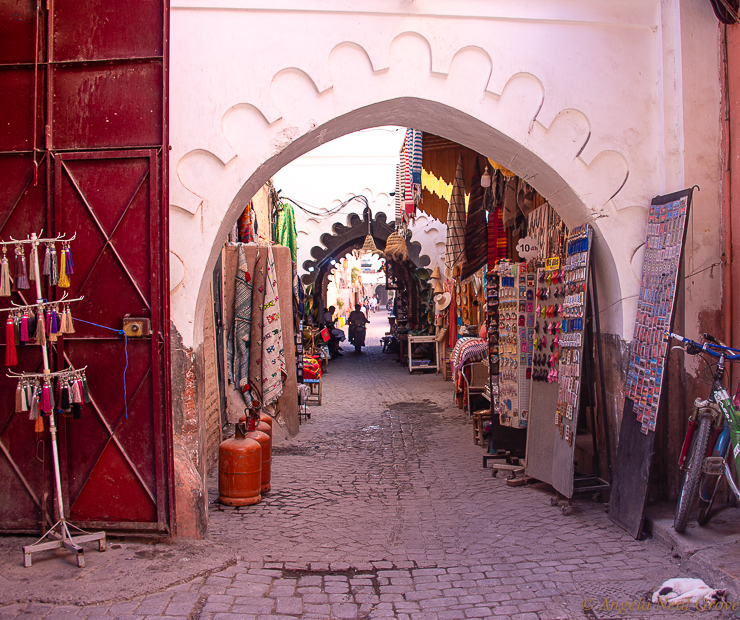
The medieval medina with its maze-like passages and alleys is one of the busiest in Africa and now a UNESCO World Heritage Site. The center of the city was a trading and resting place for caravans. Today it is warren of Moroccan crafts artisans and an Aladdin’s cave of treasures and temptations for shoppers.
As I was leaving the city was preparing for the 2023 meeting of the World Bank. More contrasts and more indications of Morocco’s international status.
Essouria
Essouria on the Atlantic coast was last stop on my loop around Morocco. It is a three-hour drive from Marrakech through orchards of Argan trees which produce the oil for which Morocco is famous.
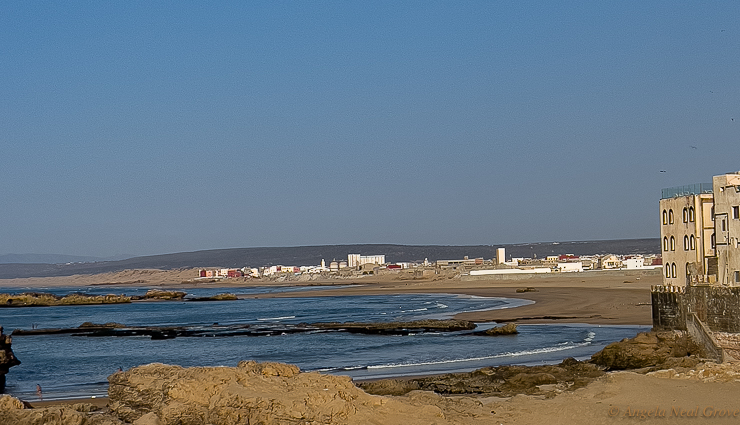
The history of this pretty port could be a potted history of Morocco. In 5th century BCE Carthaginian Hanno the Navigator sailed the west coast of Africa landing at Essouria. Throughout the centuries others followed until 1550 when the Portuguese built a fortress. During the next two hundred years the Spanish, Dutch, British and French all tried to conquer the city.
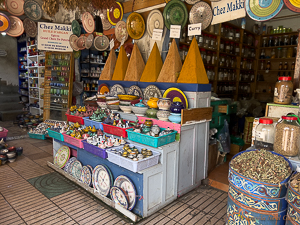
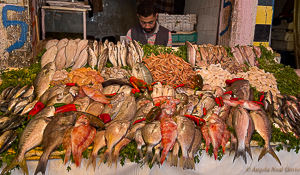
Meanwhile trade flourished. Called Port Timbuktu, much of Africa’s trade with Europe and trans-Atlantic trade to the New World passed though Essouria.
Today the coastal city with its compact medina is calm. The Portuguese built battlements are now a background for selfies, and the cobbled alleys a magnet for artists and musicians. Fishing boats ply the coast bringing in a cornucopia of seafood.
Casablanca, Journey’s End
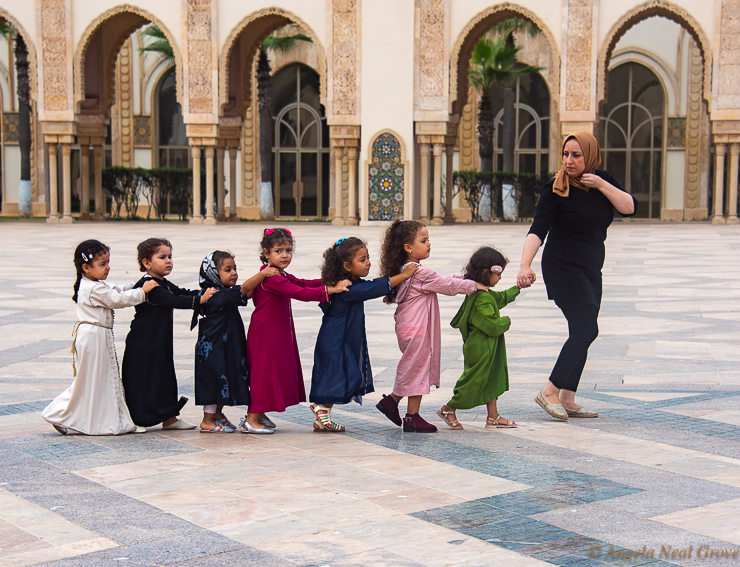
It was time to return to Casablanca, about three hours away. But there was one more treat in store. The drive northwards along the coastline overlooks beaches beloved by international surfers. We stopped for lunch on the beach and had the most decadent feast of crab, lobster, clams, oysters and local seafood freshly caught that morning. It was a grand finale and hard to leave as we sadly shook sand from our sandals.
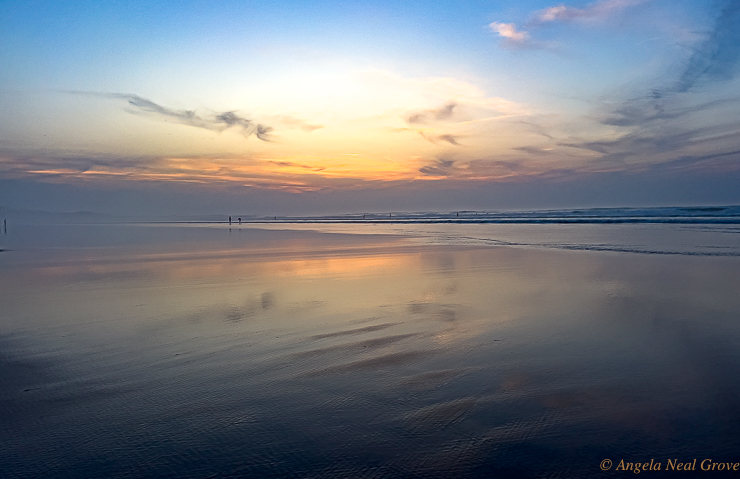
Land of Contrasts
What a kaleidoscope! On this journey I met people and cultures dating back millennia and discovered desert, mountains and coastline. Morocco, the first country to recognize the fledgling United States in 1777, land of 1001 Arabian Nights is a place to step back into the past, yet also clearly glimpse the future. It is a land of contrasts.

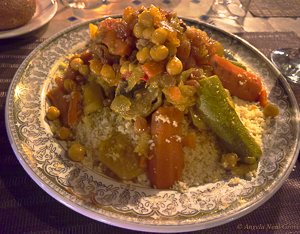
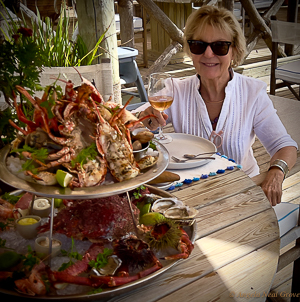

Angela,
what a wonderful tour! I enjoyed your post. May i ask who was your guide? We would like to take a similar private trip.
Winky and Dave (Tom’s Healdsburg neighbors)
Hi Winky
Great to hear from you! morocco is such a fabulous place I shall go again! the people are so lovely too.
I traveled with A&K. it was one of those trips that had been postponed many times!
A&K is flawless when it comes to logistics. however with this trip I could have used a little more depth. I think another time i would travel with geoex who are here in san francisco in the presidio. I traveled silk road, SE ASia,oman and sri lanka with them and think they are great!
Stay dry and warm and enjoy armchair travel during inclement weather!
Angela
Great to hear from you! morocco is such a fabulous place I shall go again! the people are so lovely too.
I traveled with A&K. it was one of those trips that had been postponed many times!
A&K is flawless when it comes to logistics. however with this trip I could have used a little more depth. I think another time i would travel with geoex who are here in san francisco in the presidio. I traveled silk road, SE ASia,oman and sri lanka with them and think they are great!
Stay dry and warm and enjoy armchair travel during inclement weather!
Angela
Thanks for the wonderful photos (as usual) and vivid commentary, Angela. My wife and i visited the same places in morocco that you did on a private trip organized by our local agent. My favorite place was v0lubilis and i marveled at how the romans had recreated a replicate of their homeland while so far from rome.
Good to hear from you bill! I loved volubilis too. I could have spent much more time there. EDITH WHARTON has a great description in her book “IN MOROCCO” yes the romans were good at recreating their homeland! Angela
Angela— incredible trip with your gorgeous photographs and fabulous history— what an adventure! Thank you for this so much! – Alice
thank you alice! Its fun reliving this adventure in the dark days of winter. moocco is such a historic beautiful country, if I think hard I think I can still smell the jasmin!
Angela
Hi Angela,
Thanks for unblocking me!
I loved your article about Morocco. It is very high on my wish list. Would love to couple your A & K trip with some hiking in the Atlas Mts. Will work on putting that together. beautiful photos. I love the sahara photo with the shadow of your camel caravan!! xo Wendy
Dear Wendy,
I am glad you are unblocked too! pesky desribution issues!
You would love hiking the mountains i know! and meeting the wonderful people who live there. So would I! morocco is on my return list for sure. i recommend alice morrison’s book; adventures in morocco. She went there for a marathon and stayed! beautifully written and hilarious too!
Angela